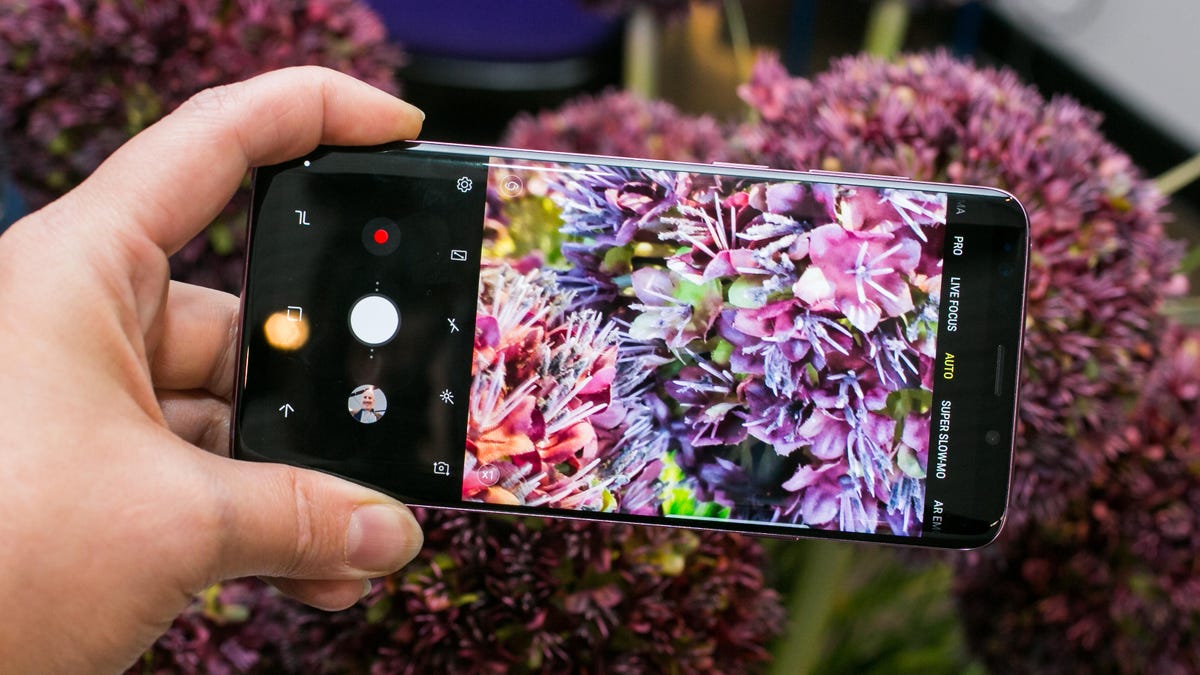
The Galaxy S9 and Galaxy S9 Plus introduce a new kind of mobile camera, one that automatically switches apertures when you take it into low light situations.
Samsung's Galaxy S9 Plus adds a second camera lens to the back, which makes depth-of-field portrait photos happen.
We took scores of photos with the Galaxy S9 phones' 12-megapixel camera in a variety of lighting scenarios, from stunning vistas to dimly-lit restaurants, to nighttime scenes.
Unless otherwise noted, the pictures were snapped in automatic mode, though there are tons of filters and a Pro mode for overriding settings like ISO and white balance.
Outdoor pictures are especially pretty taken with natural light, and contrast is high.
Here's a sweeping view of Barcelona's Arc de Triomf.
The Galaxy S9's selfie mode has a "skin tone" slider that replaces "beauty mode" to smooth over blemishes.
More gorgeous mountain scenery.
A surfer braves the waves.
This is what Barcelona's famous Park Guell looks like on an overcast day.
Tricky lighting can be a mobile camera's arch rival.
Compared to the real life scene, colors are overly saturated, contrast is poor, and the photo loses a lot of texture and detail.
Portrait mode taken with the Galaxy S9 Plus' second camera can make for some dramatic shots.
But if you're not careful, and you set blur to maximum levels, you may wind up focusing on the wrong thing. Luckily, you can adjust the intensity after the fact, which is helpful.
This shot is taken looking in to the Boqueria, Barcelona's famous food hall.
Colors popped in this half indoor/half outdoor light.
When the camera detects a brightness level of 100 lux, it automatically drops into its low light setting with an F1.5 aperture, which increases brightness and reduces noise.
Details are generally crisp with the Galaxy S9's cameras.
However, the lower aperture, combined with slower shutter speeds, blurs movement.
Hypnotic avocados make for a great wallpaper.
Most smartphone cameras would struggle with this lighting on an overcast day.
Inside a metro, we're a little yellowed, but the Galaxy S9 captured the scene on a moving train.
I call it: lunch.
Portrait mode isn't just good for people. I also used it to highlight biscotti, and their price tag.
This photo, taken inside a cafe near a window, stayed in the F2.4 aperture for daylight photos.
Next up, we're going to take the Galaxy S9 into the Sagrada Familia, Barcelona's famed, unfinished Catholic church.
The S9 definitely brightened the facade and concrete figures on this grey day. Photos are nice, but not particularly faithful to the mood. Manual settings would fix that.
Just inside the door, the camera can't take in the vaulted ceiling, but neither could any other.
The church is filled with beautiful stained glass windows. The Galaxy S9 chose the F2.4 daylight setting for this shot...
...and the low light F1.5 setting for this one, to capture the light streaming through the windows. P.S. The colors look richer on the Galaxy S9's high-contrast AMOLED display.
Yuck. Overly bright, with scattered lighting.
The iPhone X creates a more faithful representation of the color and readability of the neon sign.
This cocktail, taken with the S9 Plus, is bright and detailed - you can see the bubbles in the froth and the edges of the rose petal garnish. However, it misses the texture of the table.
Google's Pixel 2 created the best shot overall, with excellent contrast and detail in the rose petals and surrounding table, and a bright frothy topping with visible bubbles.
Here it is on the iPhone X, with colors that mirrored the dark bar.
Fully indoors, the Galaxy S9 did great with this colorful room.
With the low light aperture engaged, the Galaxy S9 overly brightened these ceiling coverings. It's a really nice shot, but not realistic.
This close up is much truer to life.
A very low light bar.
Quick movements in low light would be tough to capture anyway, but the Galaxy S9 makes blurring more susceptible. Just look at the server's hands.
Sneaky! This was taken from across the table in a dark restaurant.
Another shot down the table.
A Barcelona street scene at night takes advantage of the low light mode.
Silhouettes on a rain night at Barcelona's Magic Fountain.
Postcard-perfect.
Fast-moving water would be hard for most cameras to capture, and the Galaxy S9 can't do this colorful, massive, constantly-moving fountain justice. You'd need a DSLR, a tripod and lots of patience.
Another try.
Look what happens when I try to take a selfie. The camera overcorrects to brighten my face and overexposes the fountain. Flip back to the previous photo to remind yourself how dark it is.
More night shots.
I was hoping for a little more contrast and clarity taking this photos of the lit-up museum behind us.
Overall, the Samsung Galaxy S9 and S9 Plus take excellent photos, with lots of options to choose from. We'll continue our deep dive testing against rival phones.
For now, read our full Galaxy S9 and Galaxy S9 Plus reviews.


